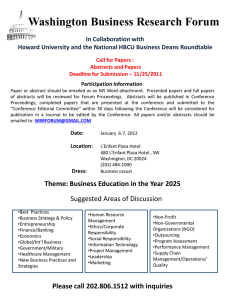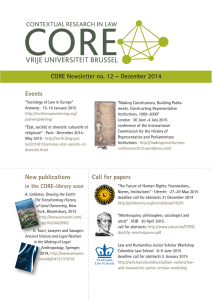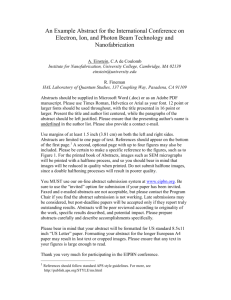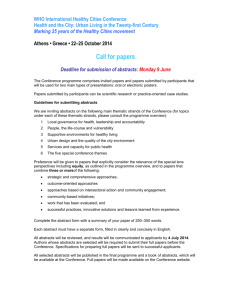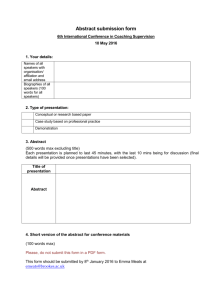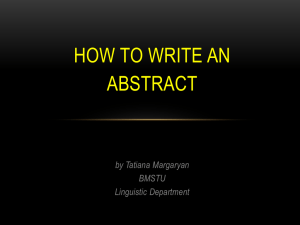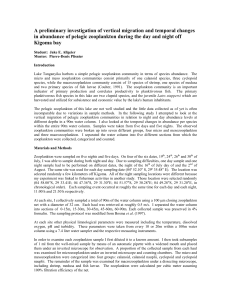call for poster abstracts
advertisement
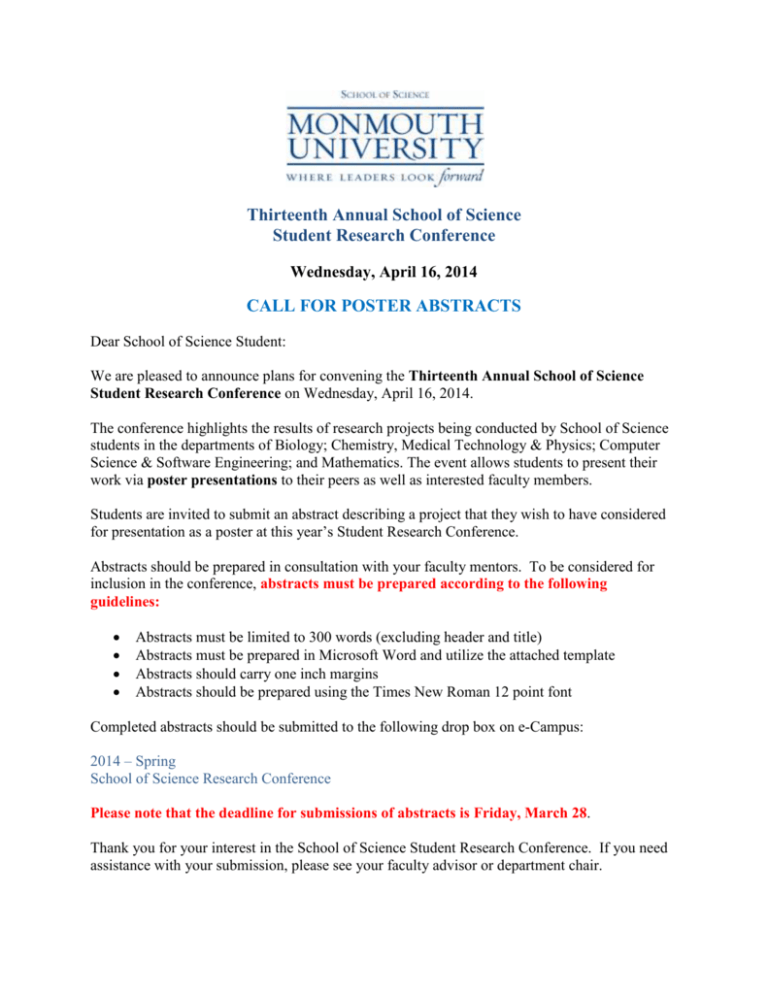
Thirteenth Annual School of Science Student Research Conference Wednesday, April 16, 2014 CALL FOR POSTER ABSTRACTS Dear School of Science Student: We are pleased to announce plans for convening the Thirteenth Annual School of Science Student Research Conference on Wednesday, April 16, 2014. The conference highlights the results of research projects being conducted by School of Science students in the departments of Biology; Chemistry, Medical Technology & Physics; Computer Science & Software Engineering; and Mathematics. The event allows students to present their work via poster presentations to their peers as well as interested faculty members. Students are invited to submit an abstract describing a project that they wish to have considered for presentation as a poster at this year’s Student Research Conference. Abstracts should be prepared in consultation with your faculty mentors. To be considered for inclusion in the conference, abstracts must be prepared according to the following guidelines: Abstracts must be limited to 300 words (excluding header and title) Abstracts must be prepared in Microsoft Word and utilize the attached template Abstracts should carry one inch margins Abstracts should be prepared using the Times New Roman 12 point font Completed abstracts should be submitted to the following drop box on e-Campus: 2014 – Spring School of Science Research Conference Please note that the deadline for submissions of abstracts is Friday, March 28. Thank you for your interest in the School of Science Student Research Conference. If you need assistance with your submission, please see your faculty advisor or department chair. John A. Tiedemann, Assistant Dean DESCRIPTIVE TITLE OF YOUR PROJECT Student Name(s) Department Name of Faculty Mentor ABSTRACT The descriptive abstract provides a brief summary describing the project you have undertaken, including a summary of your goals and objectives and key results. Descriptive abstracts are limited to a maximum of 300 words. They should be prepared in Microsoft Word using a 12 point Times New Roman font and carry one inch margins. A sample abstract using this format is found on the following page. MACROZOOPLANKTON OF UPPER BARNEGAT BAY Nicole Wisniewski and Keith Leonard Department of Biology Faculty Mentor: Assistant Dean John Tiedemann ABSTRACT As the main herbivorous component of marine ecosystems, zooplankton play an important role in estuarine food webs. Macrozooplankton are particularly important because they are intermediaries in estuarine food chains, forming a link between smaller zooplankton and higher trophic levels, including many commercially and recreationally valuable fishes. However, despite their importance in filling this niche, little is known about the distribution, abundance, and ecology of macrozooplankton in many coastal regions. This is the case in the Barnegat Bay ecosystem where there has not been a detailed survey of zooplankton since the 1970’s. Biological conditions, physical conditions and environmental degradation in estuaries exert control over the composition, abundance, and distribution of zooplankton in estuaries and zooplankters must adapt to varying stresses associated with changing conditions. The environment of Barnegat Bay has changed considerably over the 3 decades since the last comprehensive zooplankton studies were conducted. The bay has been affected by an array of human impacts that potentially threaten its ecological integrity including nutrient enrichment, algal blooms, alterations of freshwater inputs, and extensive development around the bay and its watershed. Initiated in March 2010, the objective of this project is to gather information on the current status of macrozooplankton populations in upper Barnegat Bay and to determine if the species composition of important macrozooplankters has changed over the past several decades. The results of this project will include production of the first inventory of common macrozooplankton compiled for the Barnegat Bay ecosystem in over 30 years. In addition to providing updated information on the status of this important component of the bay’s living resources, the results of this study will yield updated information on the seasonal occurrence and peak abundance periods for nuisance zooplankton species in the bay, including ctenophores and sea nettles.

